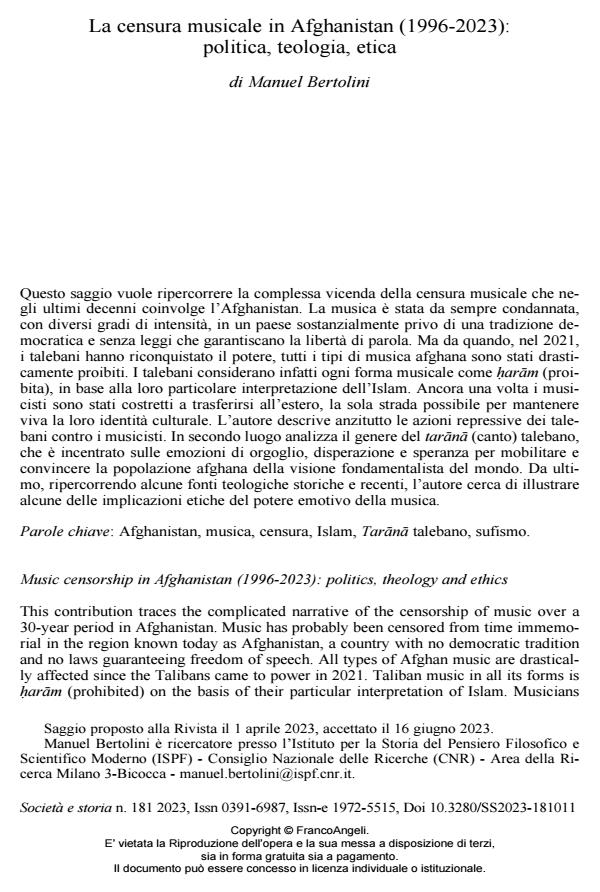Music censorship in Afghanistan (1996-2023): politics, theology and ethics
Journal title SOCIETÀ E STORIA
Author/s Manuel Bertolini
Publishing Year 2023 Issue 2023/181
Language Italian Pages 24 P. 617-640 File size 229 KB
DOI 10.3280/SS2023-181011
DOI is like a bar code for intellectual property: to have more infomation
click here
Below, you can see the article first page
If you want to buy this article in PDF format, you can do it, following the instructions to buy download credits

FrancoAngeli is member of Publishers International Linking Association, Inc (PILA), a not-for-profit association which run the CrossRef service enabling links to and from online scholarly content.
This contribution traces the complicated narrative of the censorship of music over a 30-year period in Afghanistan. Music has probably been censored from time immemorial in the region known today as Afghanistan, a country with no democratic tradition and no laws guaranteeing freedom of speech. All types of Afghan music are drastically affected since the Talibans came to power in 2021. Taliban music in all its forms is ḥarām (prohibited) on the basis of their particular interpretation of Islam. Musicians are once again being forced to relocate abroad. This means they will only be able to keep their musical heritage and identity alive from beyond Afghanistan’s borders. First, the author looks at incidents involving musicians that have occurred since the Taleban’s takeover. Secondly, he examines the little known Afghan Taliban taranas (chants). The chants voice emotions of pride, desperation, and hope, to mobilize and convince the Afghan population of the Taliban’s worldview. By exploring some theo- logical sources, the author seeks to explain the ethical implications of the emotional power of music.
Keywords: Afghanistan, Music, Censorship, Islam, Taliban taranas, Sufism.
Manuel Bertolini, La censura musicale in Afghanistan (1996-2023): politica, teologia, etica in "SOCIETÀ E STORIA " 181/2023, pp 617-640, DOI: 10.3280/SS2023-181011